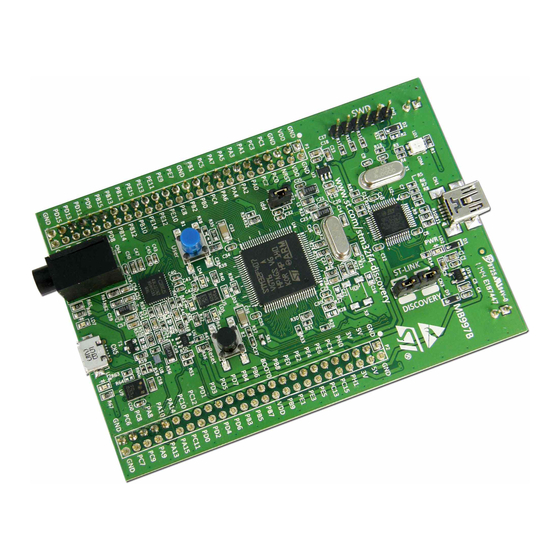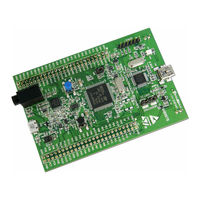
ST STM32F4 Series Manuals
Manuals and User Guides for ST STM32F4 Series. We have 8 ST STM32F4 Series manuals available for free PDF download: Programming Manual, Application Note, Getting Started, User Manual, Manual
ST STM32F4 Series Programming Manual (260 pages)
Cortex-M4
Brand: ST
|
Category: Computer Hardware
|
Size: 3.48 MB
Table of Contents
Advertisement
ST STM32F4 Series Programming Manual (262 pages)
Brand: ST
|
Category: Computer Hardware
|
Size: 2.73 MB
Table of Contents
ST STM32F4 Series Programming Manual (262 pages)
Brand: ST
|
Category: Computer Hardware
|
Size: 2.72 MB
Table of Contents
Advertisement
ST STM32F4 Series Application Note (56 pages)
Brand: ST
|
Category: Microcontrollers
|
Size: 3.6 MB
Table of Contents
ST STM32F4 Series Application Note (50 pages)
Getting started with MCU hardware development
Brand: ST
|
Category: Motherboard
|
Size: 1.25 MB
Table of Contents
ST STM32F4 Series Getting Started (44 pages)
MCU hardware development
Brand: ST
|
Category: Microcontrollers
|
Size: 0.99 MB
Table of Contents
ST STM32F4 Series User Manual (35 pages)
Discovery kit
Brand: ST
|
Category: Computer Hardware
|
Size: 1.2 MB
Table of Contents
ST STM32F4 Series Manual (5 pages)
Brand: ST
|
Category: Computer Hardware
|
Size: 1.71 MB
Table of Contents
Advertisement







